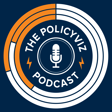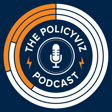
Empathy and Inequality: Unpacking America’s DIY Safety Net with Jessica Calarco
On this week’s episode, I talk with Jessica Calarco about her book “Holding It Together: How Women Became America’s Safety Net” and the role of qualitative data in research and data visualization. Calarco, a sociologist from UW Madison, discusses her research on family life inequalities and the shift to a “DIY society,” where individuals, particularly women, manage risks without government support, leading to reliance on low-wage caregiving. She critiques the wealthy elite for discouraging collective social support and emphasizes the need for policy changes to ensure basic needs, caregiving opportunities, and work-life balance through measures like paid family leave. We also talk about Jessica’s data collection efforts, which involved more than 400 hours of interviews, surveys, and national studies, to understand human experiences deeply. She addresses critiques of qualitative research’s representativeness, arguing its strength lies in capturing life’s complexities.
Keywords: data, data visualization, flourish, jessica calarco, holding it together, safety net, DIY, data analysis, qualitative data, qualitative data analysis, qualitative data analysis - coding and developing themes, machine learning, nvivo, dedoose, ai, data scientist, qualitative data analysis thematic analysis, qualitative data collection, university of wisconsin, data analyst, data science, machine learning for beginners
Subscribe to the PolicyViz Podcast wherever you get your podcasts.
Become a patron of the PolicyViz Podcast for as little as a buck a month
Visit Jessica’s website and find her book “Holding it Together” on Amazon
Follow me on Instagram, LinkedIn, Substack, Twitter, Website, YouTube
Email: jon@policyviz.com

